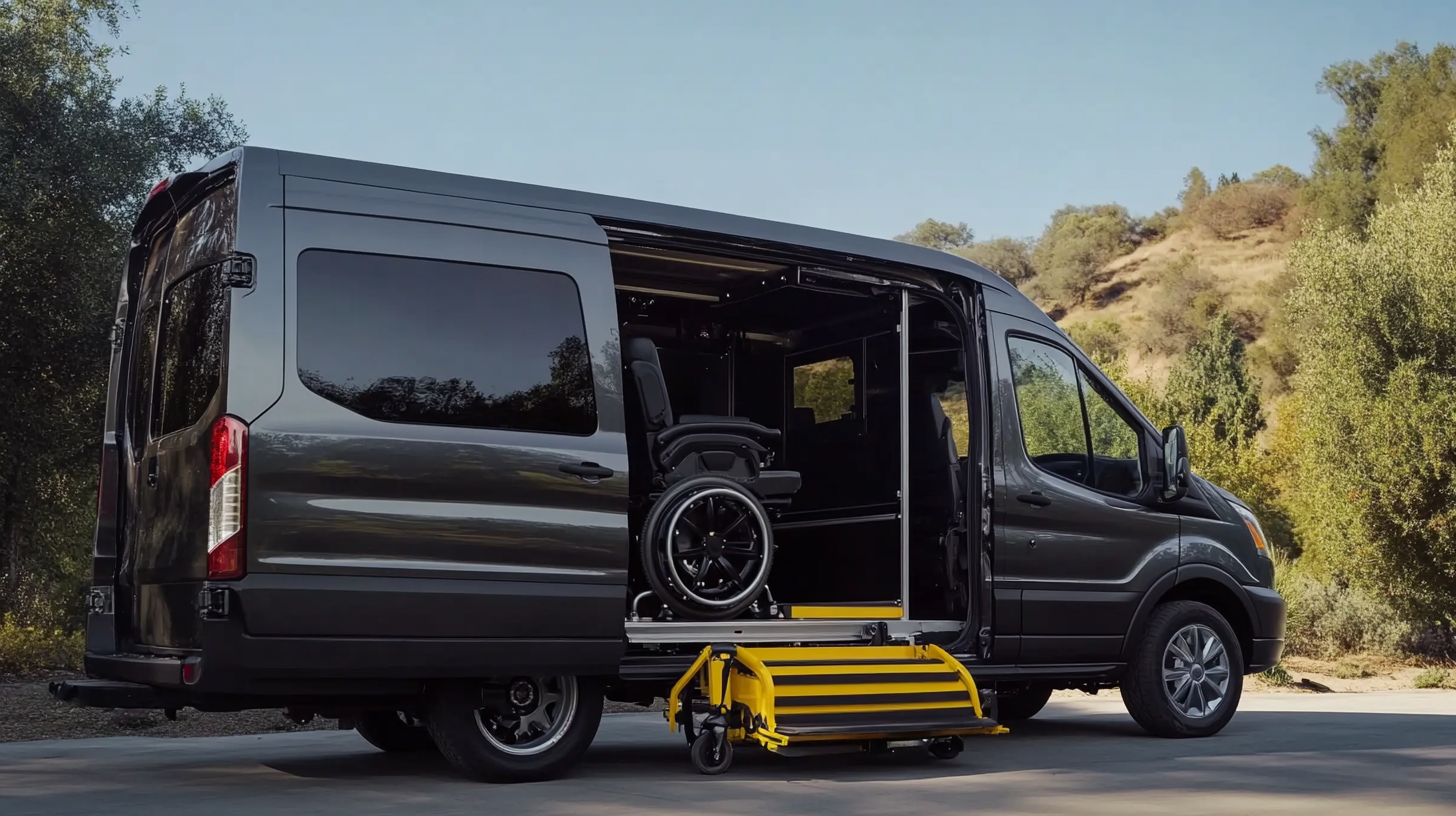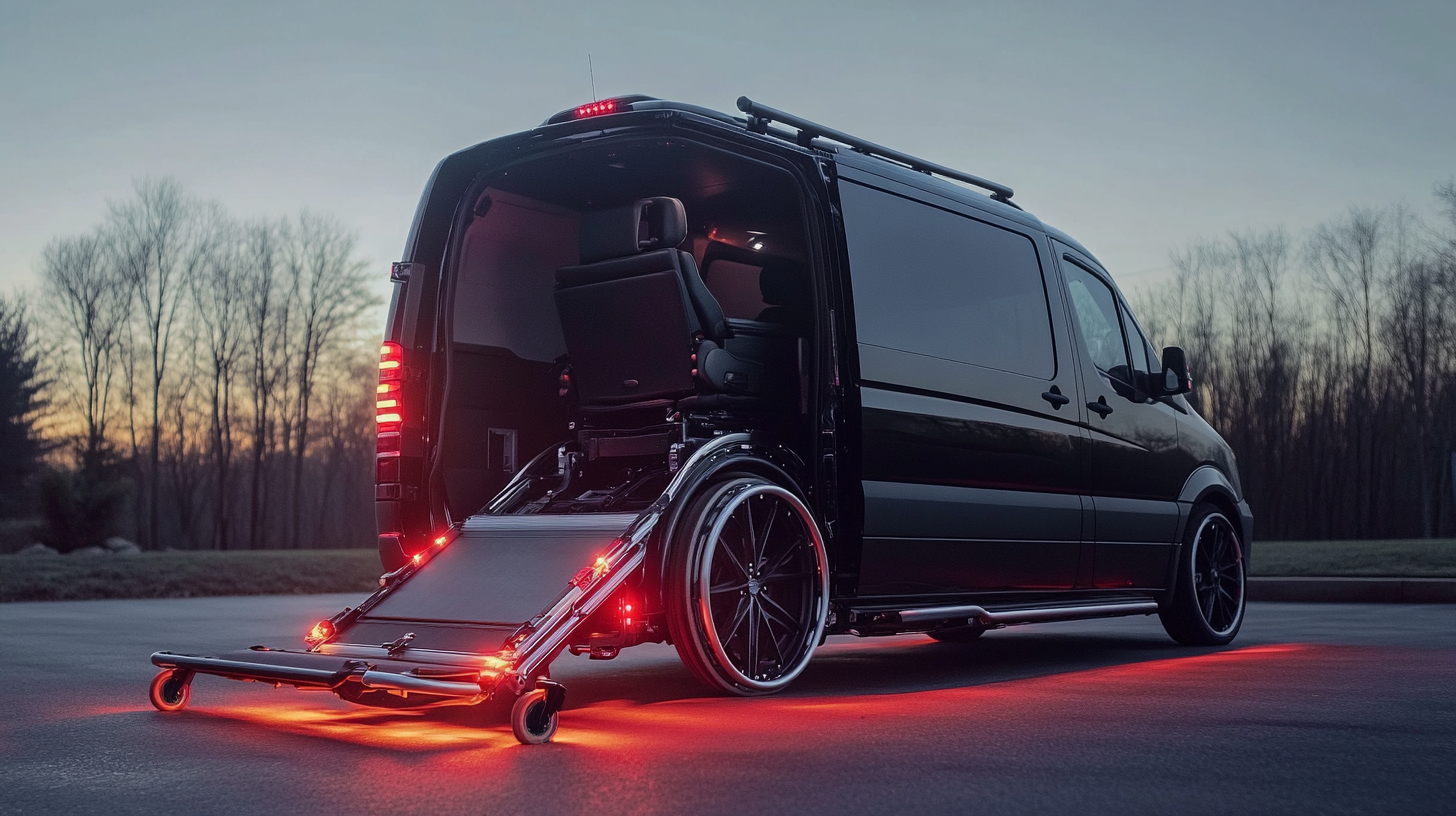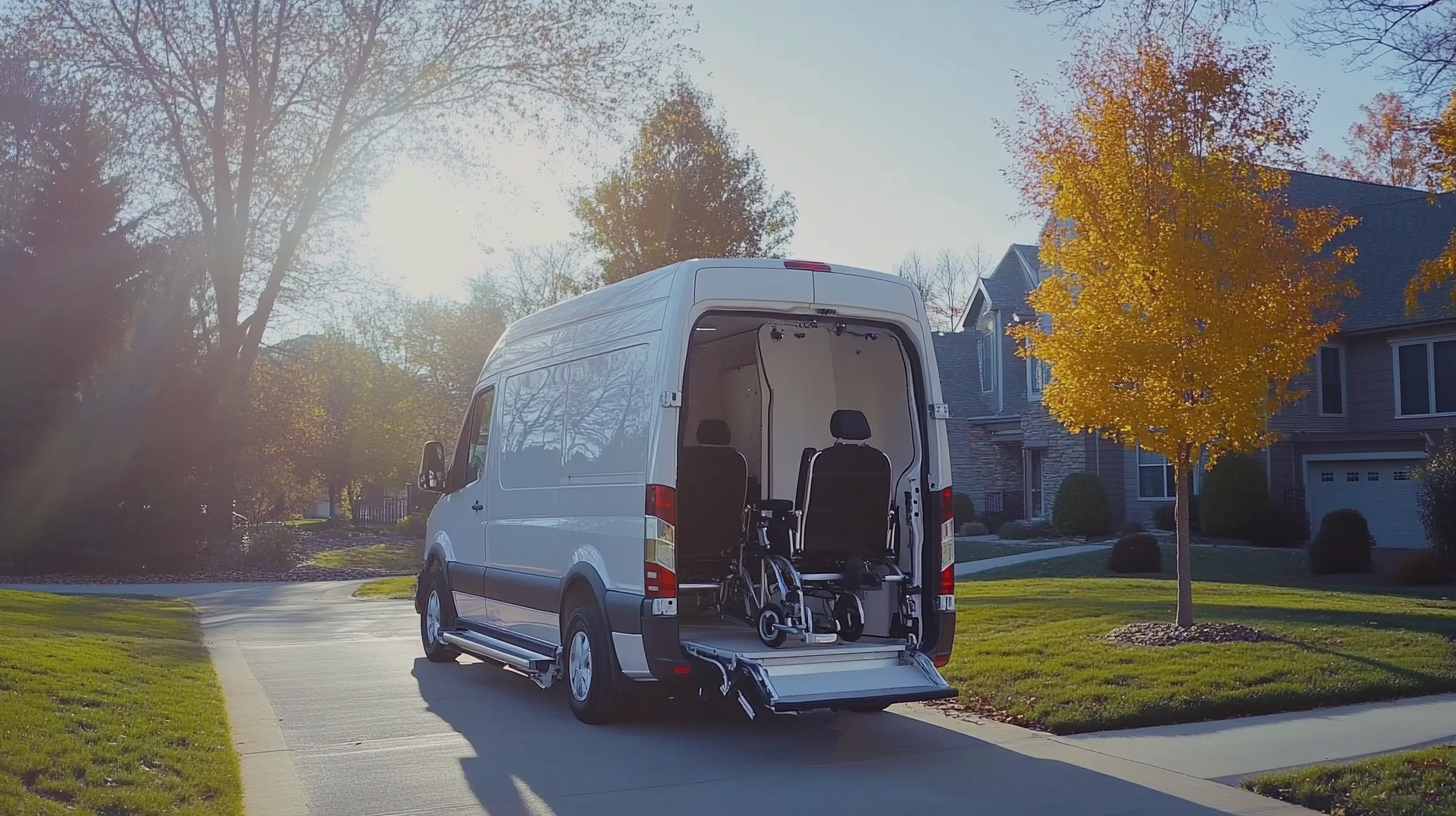Innovative Wheelchair Accessible Vans That Change Lives
According to recent statistics from the U.S. Department of Transportation, approximately 7.5 million Americans rely on wheelchairs for mobility. This significant demographic often faces challenges when it comes to transportation, which can greatly limit their independence and quality of life. The introduction of innovative wheelchair accessible vans has transformed the way individuals with mobility impairments navigate their world. A van with wheelchair lift not only offers ease of access but also enhances safety and comfort, enabling users to participate more fully in social and community activities.
The market for accessible vehicles is expected to surge, driven by advancements in technology and a growing awareness of inclusive solutions. A report by Allied Market Research predicts that the global wheelchair accessible vehicle market will reach $9.58 billion by 2027, reflecting a robust annual growth rate. These innovative vans are designed not just for functionality but also for style and comfort, addressing the needs of diverse users. As manufacturers push the boundaries of design and engineering, the impact of these vehicles on the lives of individuals with disabilities cannot be overstated, ushering in a new era of mobility and freedom.

Revolutionizing Mobility: The Need for Accessible Vans Today
In today’s fast-paced world, mobility remains a crucial aspect of independence and quality of life. For individuals with disabilities, the necessity for accessible transportation options is more pressing than ever. Wheelchair accessible vans are at the forefront of revolutionizing mobility, bridging the gap between wishful thinking and practical solutions. These innovative vehicles not only provide a means of transport but also symbolize freedom and empowerment for countless individuals and families.
The urgency for accessible vans stems from the increasing recognition of the challenges faced by those with limited mobility. Traditional vehicles often fail to accommodate the needs of wheelchair users, leading to social isolation and dependence on others for transportation. As communities strive to become more inclusive, the demand for vans equipped with ramps, spacious interiors, and advanced safety features is growing. Companies are responding to this need by creating vehicles that cater specifically to the diverse needs of users, making it easier for them to engage in everyday activities, attend work, or enjoy leisure time without the hassle of inaccessible transport options.
Moreover, these accessible vans are designed with cutting-edge technology that enhances user experience. Features such as automated lift systems, customizable seating arrangements, and smart navigation tools not only improve accessibility but also enhance safety and comfort. As society continues to evolve towards inclusivity, the importance of investing in mobility solutions that respect and prioritize the needs of all citizens cannot be overstated. By embracing such innovations, we can work towards a world where everyone has the right to travel freely and with dignity.

Key Features of Modern Wheelchair Accessible Vans
Modern wheelchair accessible vans are designed with innovative features that significantly enhance mobility and independence for individuals with disabilities. According to a report by the National Highway Traffic Safety Administration (NHTSA), mobility vehicle modifications have increased by over 15% in the last decade, demonstrating a growing need for accessible transportation solutions. These advancements not only improve comfort and ease of use for users but also adhere to safety standards that protect both the occupants and pedestrians.
One of the key features of modern wheelchair accessible vans is the incorporation of automatic ramps and lifts, allowing users to enter and exit the vehicle with minimal physical strain. The Mobility Equipment Dealers Association (MEDA) states that about 75% of wheelchair accessible van users prefer automatic systems over manual ones due to their convenience and speed. Additionally, these vehicles often feature lower floor designs which create a more spacious interior, making it easier for users to maneuver within the van.
Safety is another critical aspect in the design of accessible vans. The latest models are equipped with securement systems that use a combination of straps and locks to ensure that wheelchairs are firmly in place during transit. Research from the University of Michigan Transportation Research Institute indicates that effective wheelchair securement can reduce the risk of injury by over 60% in the event of an accident. Moreover, many modern vans offer advanced driver-assist technologies, such as lane departure warnings and adaptive cruise control, contributing to a safer driving experience for both wheelchair users and their caregivers.

Real-Life Impact: Inspiring Stories from Users
The stories emerging from users of innovative wheelchair accessible vans epitomize resilience and the transformative power of mobility. Each narrative reflects a renewed sense of freedom, crucial in reshaping lives often constrained by physical limitations. These vans are not just vehicles; they symbolize a bridge to the outside world, allowing individuals to engage more fully with their communities.
Consider the experiences of users who have turned the mundane into the extraordinary. One woman recounts how her new accessible van enabled her to attend her daughter’s graduation—an occasion she once thought would be impossible to experience. Others share how these vehicles have allowed them to visit places they longed to see, from scenic parks to family gatherings, all contributing to a sense of belonging and connection.
These inspiring stories highlight more than just the practical aspects of transportation; they illustrate the profound impact that accessibility can have on mental well-being and quality of life. It’s about independence, empowerment, and redefining what it means to live fully. Each life touched by these innovative vans is a testament to the essential role that thoughtful design plays in fostering inclusion and joy.

Comparing Leading Brands in Wheelchair Accessible Vehicles
The advancements in wheelchair accessible vehicles (WAVs) are reshaping how mobility is perceived for individuals with disabilities. As the demand for these vehicles grows, various brands have emerged, each boasting unique features and designs aimed at improving accessibility and comfort. This blog will focus on comparing some of the leading brands in the wheelchair accessible vehicle market, highlighting why they stand out in terms of practicality and innovation.
Among the key players in the WAV market, several brands have distinguished themselves through engineering excellence and user-oriented design. Their commitment to safety features and intuitive controls enhances the driving experience for both users and caregivers. Furthermore, the integration of modern technology in these vehicles not only improves functionality but also ensures a seamless experience. As brands strive to lead in this niche market, consumers benefit from an increased variety of options tailored to meet various needs.
In addition to technical specifications and design innovations, brand reputation plays a significant role in consumer decision-making. Established brands generally enjoy higher consumer loyalty, supported by a track record of reliability and quality. Conversely, newer entrants to the market are still working to gain similar trust among potential buyers. The competition among these manufacturers not only drives innovation but also ensures that consumers have access to an array of choices when it comes to wheelchair accessible vans that truly change lives.
Future Innovations: What’s Next for Accessible Transportation?
The future of accessible transportation is rapidly evolving, driven by innovative technologies and a growing commitment to inclusivity for all users. Recent initiatives focus on combining autonomous driving advancements with tailored accessibility solutions, ensuring that the next generation of vehicles not only accommodates people with disabilities but enhances the overall travel experience. For instance, partnerships between tech and automotive firms aim to develop self-driving vehicles equipped with functionalities specifically designed for wheelchair users, making travel seamless and efficient.
Moreover, cities are rethinking their transportation infrastructures to boost accessibility. Reports highlight the necessity of implementing congestion pricing to fund enhanced accessibility in urban transit systems. This approach could alleviate traffic challenges while generating resources needed to make public transportation more welcoming for everyone. With new accessibility apps that assist users with visual impairments, the integration of cutting-edge technology into public transit is becoming more pronounced.
Furthermore, interagency collaborations are crucial in expanding access to transportation. By focusing on the principles of mobility equity, experts advocate for eliminating transit fares and enhancing service networks to create a more inclusive environment. As innovations continue to emerge—ranging from robotics to integrated mobility solutions—the landscape of accessible transportation is set for transformative changes that prioritize the needs of all users, paving the way for a more connected and inclusive society.